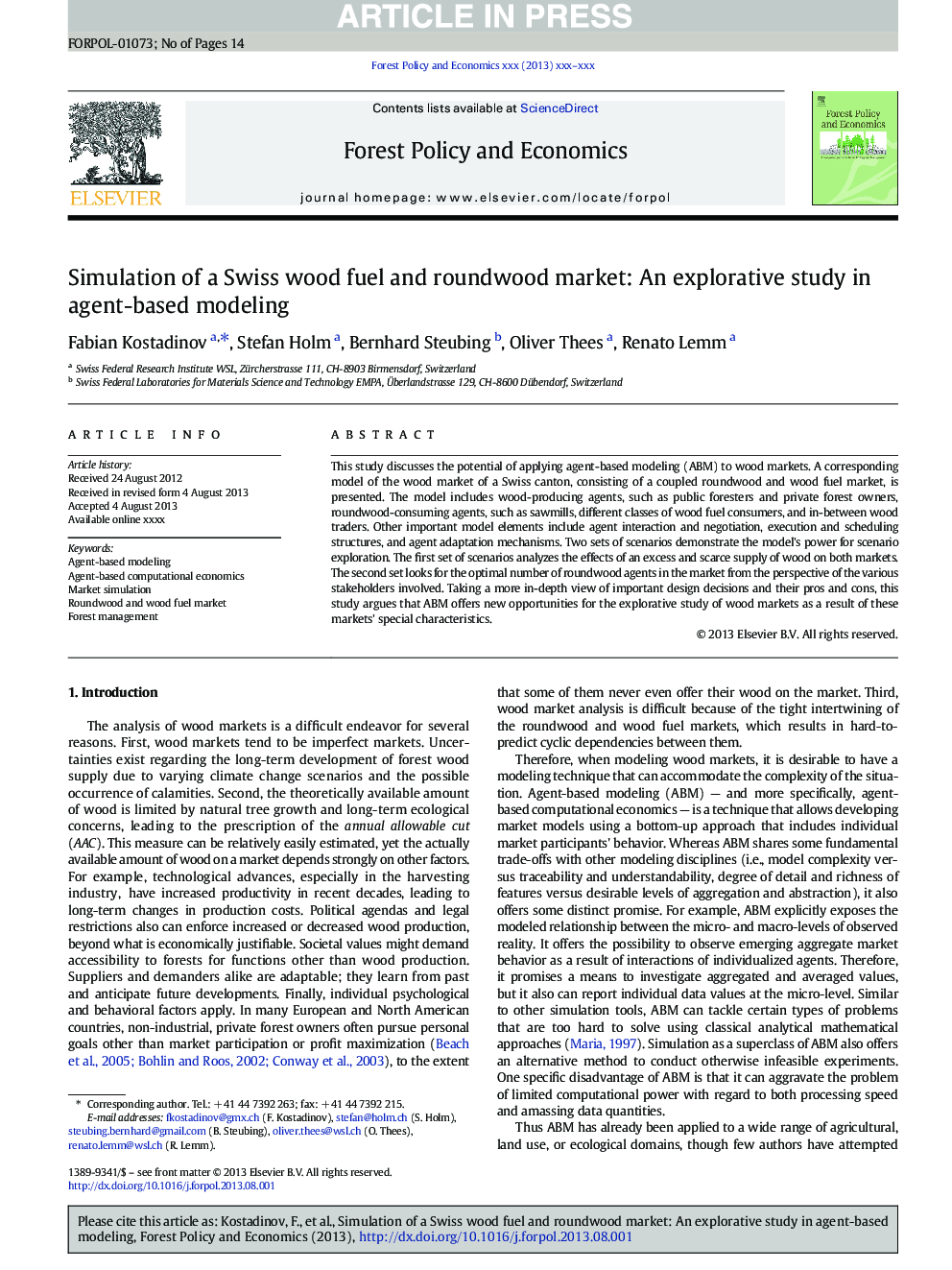| Article ID | Journal | Published Year | Pages | File Type |
|---|---|---|---|---|
| 6545022 | Forest Policy and Economics | 2014 | 14 Pages |
Abstract
This study discusses the potential of applying agent-based modeling (ABM) to wood markets. A corresponding model of the wood market of a Swiss canton, consisting of a coupled roundwood and wood fuel market, is presented. The model includes wood-producing agents, such as public foresters and private forest owners, roundwood-consuming agents, such as sawmills, different classes of wood fuel consumers, and in-between wood traders. Other important model elements include agent interaction and negotiation, execution and scheduling structures, and agent adaptation mechanisms. Two sets of scenarios demonstrate the model's power for scenario exploration. The first set of scenarios analyzes the effects of an excess and scarce supply of wood on both markets. The second set looks for the optimal number of roundwood agents in the market from the perspective of the various stakeholders involved. Taking a more in-depth view of important design decisions and their pros and cons, this study argues that ABM offers new opportunities for the explorative study of wood markets as a result of these markets' special characteristics.
Related Topics
Life Sciences
Agricultural and Biological Sciences
Forestry
Authors
Fabian Kostadinov, Stefan Holm, Bernhard Steubing, Oliver Thees, Renato Lemm,
